Betta fish, or the Siamese fighting fish, are a popular pet choice for beginner and experienced fish lovers.
These colorful fish have an average lifespan of three to five years; with proper care, some betta fish can live up to ten years. Betta owners must identify and remedy health problems as soon as they occur so their fish can live a long and healthy life.
Contents
Betta Fish Diseases and Treatment
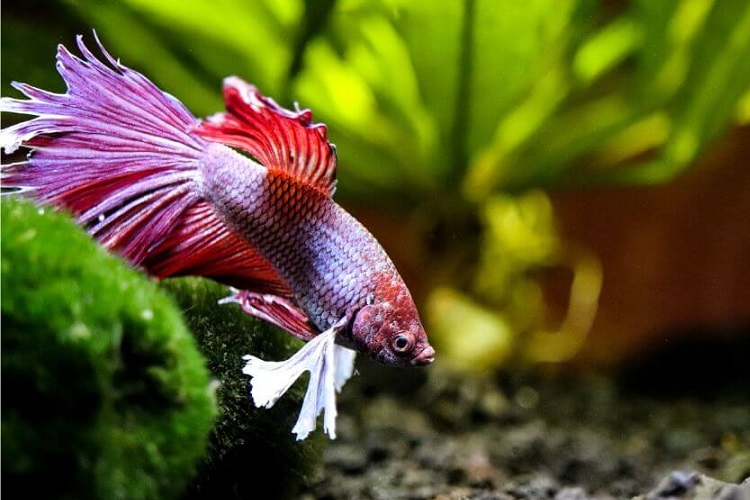
We will discuss everything you need to learn about the most common Betta diseases, their causes, their symptoms, and the best treatment option.
Contents
- Anchor Worms
- Columnaris
- Cloud Eye
- Dropsy
- Fin and Tail Rot
- Fish Fungus
- Fish Lice
- Furunculosis
- Gill Flukes
- Ich
- Popeye
- Velvet
Anchor Worms
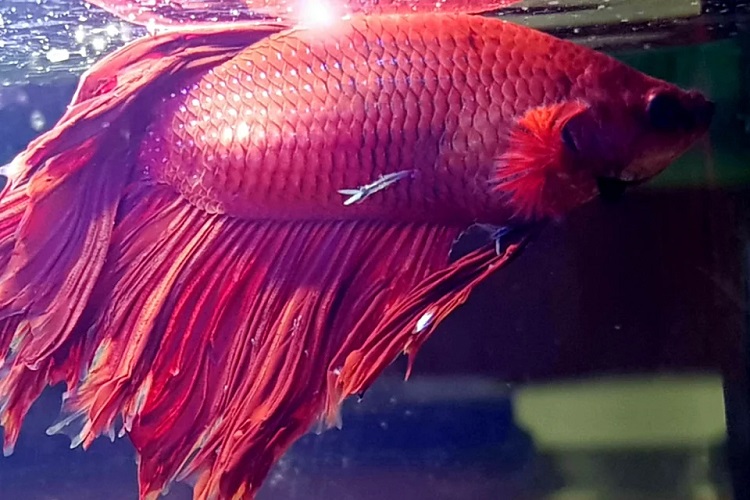
Anchor worms are parasitic crustaceans that attach themselves to freshwater fish, and they burrow into the fish and latch on with their heads. These parasites have a tail-like structure that protrudes from the fish that the fish owner can quickly identify.
Causes
Anchor worms are caused when other infected plants or fish are introduced into your aquarium, and they are very contagious and will spread through your aquarium quickly.
Symptoms
Anchor worms can be identified by a white, green, or red worm-like structure typically found at the base of the fish’s fin. You will notice that your Betta fish is rubbing against things in the aquarium to try and rid himself of the parasite. Betta fish also have red patches, breathing difficulties, and sedentary behavior.
Treatments
It is possible to manually remove anchor worms from your Betta fish, but it is not recommended. This process can be very stressful for the fish and can cause injury that may become infected.
Successful chemical treatments for anchor worms include potassium permanganate, Hikari Cyropro, Dimilin, and salt.
Betta fish have a good chance of surviving an anchor worm infection. They must be watched closely after treatment because they may develop a disease at the original infestation site.
Prevention
The best way to prevent anchor warms is to quarantine any new plants or fish for at least a month. You should monitor new plants and fish closely for any signs of anchor worms or other diseases. If, after a month, there are no indications of health problems, you can add them to your aquarium.
Columnaris

Columnaris is a highly contagious bacterial infection that will kill your Betta fish quickly if not treated immediately.
Causes
The leading causes for Columnaris are improper tank filtration, overcrowding, and lack of dissolved oxygen.
Symptoms
You will notice white or greyish areas on the head, body, gills, or sores on its back, sides, or mouth. The infection may affect their fins, giving them a ragged appearance.
Treatment
The recommended treatment for Columnaris is a combination of kanamycin and nitrofurazone.
Prevention
You can prevent dropsy by maintaining a clean water tank. It is best to check your filtration system regularly to make sure it is working correctly.
Cloudy Eye
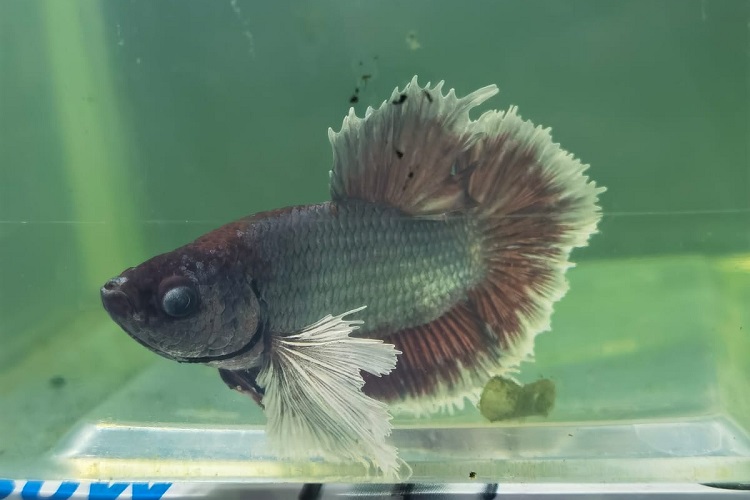
Cloudy eye is a disease that affects your fish’s eyes, which will have a hazy appearance. It can affect one eye and then spread to the second. Typically, this disease is not contagious.
Causes
There are several causes of Cloudy eye, and it is crucial to identify the exact cause of your fish’s condition to determine the most effective treatment. Cloudy eye can be caused by internal parasites, cataracts, a bacterial infection, nutritional deficiency, and poor water quality.
Symptoms
The most obvious symptom will be a cloudy film over our fish’s eyes. Their eyes will have a milky white appearance, and they will have difficulty swimming and finding food.
Treatment
You should remove the infected fish and place him in a quarantine tank. Cloudy eye can be effectively treated with one tablespoon of aquarium salt for five gallons of water. When you start to see improvement, the fish can be returned to his home aquarium.
Prevention
To prevent Cloudy eye, you should maintain clean, balanced water for your pet Betta. It is best to sanitize your filters every month, and it would help if you fed your fish a nutritious diet of meaty protein.
Dropsy
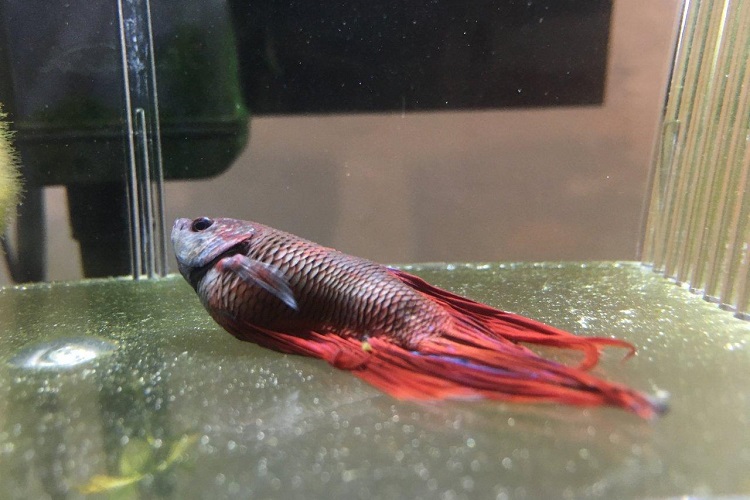
Dropsy is a prevalent bacterial infection affecting your Betta fish’s liver and kidneys. Your fish will begin to retain fluid, making regular fish activity challenging. Dropsy will only affect Betta fish with a weakened immune system.
Causes
Dirty tank water is one of the leading causes of dropsy, and another cause is fluctuations in the water temperature.
Symptoms
Betta fish will become lethargic with a bloated ad pale appearance. They will lose their appetite.
Treatment
You need to quarantine the infected fish and begin feeding your fish food that is high in nutrients. A ten-day regimen of antibiotics is recommended to fight the bacteria. When dropsy is caught early and treated, there is an excellent chance your betta fish will survive.
Prevention
You can prevent dropsy with proper aquarium maintenance.
Fin and Tail Rot
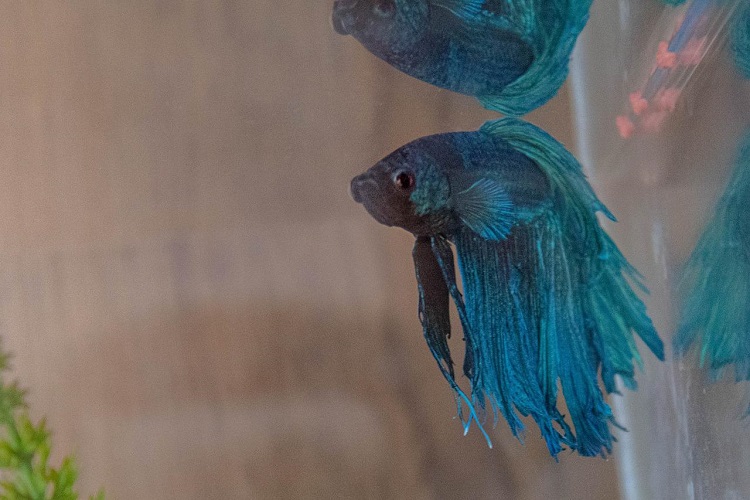
Fin and tail rot is a widespread betta fish ailment. A bacterial or fungal infection damages a betta fish’s beautiful tail or fins.
Causes
The bacteria that causes fin and tail rot is found in dirty aquarium water. Stressed betta fish can also be more susceptible to fin and tail rot.
Symptoms
You will notice that your betta fish’s fins appear to be damaged. There could be small holes, redness, or they seem to be deteriorating. Their fins can also lose their brilliant color.
Treatment
Mild cases of fin and tail rot are easily treated. Lowering the temperature of your aquarium will help delay the growth of the bacteria. Then add 1tsp of aquarium salt per 1 gallon of water. Change 90% daily for ten days.
More severe cases of fin and tail rot will require antibiotics. You can use Maracyn II, API Fungus Cure, API Furan-2, and Kanamycin.
Prevention
You can prevent fin and tail rot by providing a clean and healthy environment for your betta fish. The water must be clean and adequately heated, and it is best not to overcrowd your aquarium, so your fish do not become stressed.
Fish Fungus
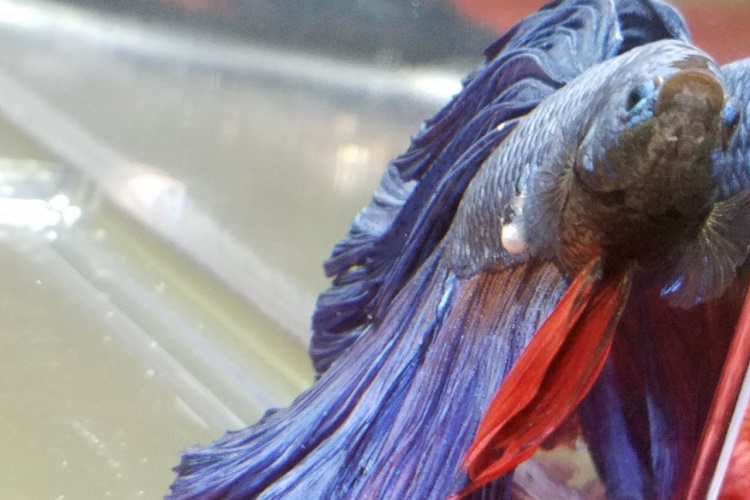
Fish fungus is a common fungus found growing on betta fish that will eat their skin, fins, and body. It is a contagious disease.
Causes
Fungal infections are prevalent in aquariums that are dirty and overcrowded. Stressed fish are more susceptible.
Symptoms
You will notice white patches on the head and body of your Betta.
Treatments
It is best to isolate the sick betta fish. Treat with 1tsp aquarium salt for every gallon of water. Then change 80% of the water daily for ten days. If this treatment does not work, you can try medications like Maracyn-2.
Prevention
It is vital to keep your aquarium water healthy for your betta fish. You should change 20 to 30% of the water weekly. Regularly test the water to ensure that ammonia, nitrate, and nitrite levels are in the normal range. You can add live plants, which will oxygenate the water.
Fish Lice

Fish lice are a common parasite found in freshwater aquariums. Fish lice will attach themselves to betta fish to feed on their body fluid.
Causes
Fish lice are introduced into your aquarium by infected fish.
Symptoms
You will see red sores on your fish and a round parasite attached to its skin.
Treatment
You will need to isolate the infected fish and start treatment with aquarium salt. Once you have gotten rid of the lice, you must treat the aquarium with an insecticide to kill any remaining parasites.
Prevention
It is best to quarantine any plants or fish that you are going to introduce to your aquarium.
Furunculosis
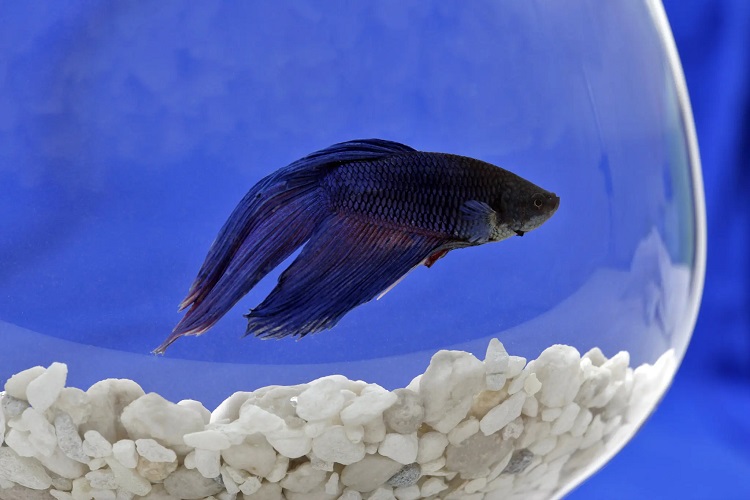
Furunculosis is a bacterial infection that is prevalent in aquarium fish. The bacterias Pseudomonas and Aeromonas are often found in aquariums that are not adequately maintained.
Causes
When betta fish are stressed, they are more inclined to be affected by these bacteria. The bacteria will flourish when aquarium water is not balanced with proper testing.
Symptoms
You will see red patches on your betta fish. More severe cases will present with red pus-filled sores. Betta fish suffering from furunculosis will become lethargic and will stop eating.
Treatment
Infected fish must be isolated and treated with antibiotics like erythromycin or tetracycline. You can use iodine and salt to clean your aquarium.
Prevention
You can prevent furunculosis by testing your aquarium water weekly and ensuring that ph, hardness, and temperature are all at optimum levels.
Gill Flukes
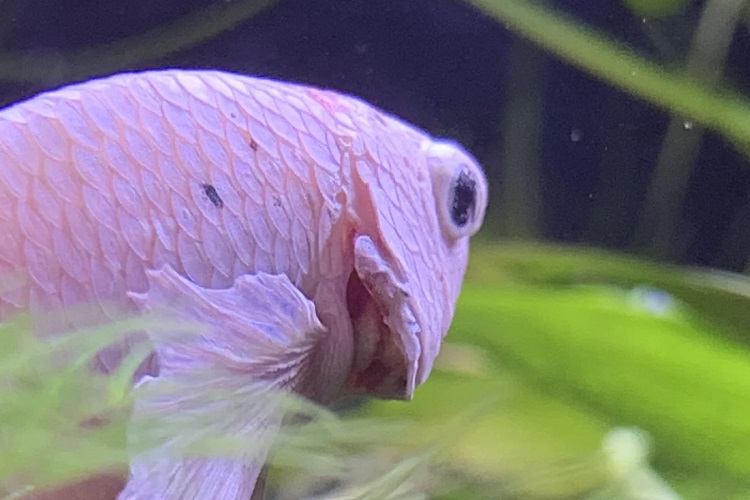
Gill flukes are a parasite that attacks your fish’s gills. They are tiny, so this disease is hard to diagnose.
Causes
Any dirty water conditions in your aquarium can cause gill flukes. Other fish or plants can also introduce them.
Symptoms
When your betta fish’s gills have been damaged, you will often see him struggling for air when he surfaces. Gills may appear to have a filmy coating or sores. Betta fish will frequently rub themselves against things in the aquarium.
Treatment
You can treat gill fluke with an anti-fluke medication which is incredibly effective. You can also try aquarium salt for a more natural solution.
Prevention
The best way to prevent gill flukes is to quarantine any new plants or fish, complete frequent water changes, and feed your Betta a nutritious diet.
Ich
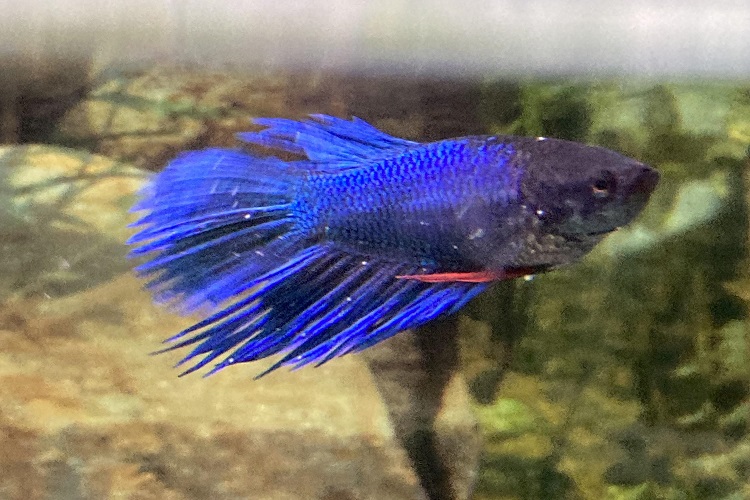
Ich is caused by a parasite called Ichtyophthirius multifiliis. The parasite affects a betta fish’s skin, and it burrows into their body and eats their flesh. This parasite is highly infectious.
Causes
Ich is usually introduced into your aquarium by new fish, and fish with weakened immune systems are more susceptible to Ich. Unhealthy aquarium water can also contribute to the presence of Ich.
Symptoms
Betta fish that have Ich will have small white spots on their body. The severity of their infection will depend on the number of white spots. They will become lethargic and often refuse to eat.
Treatment
You will need to isolate your sick Betta. Slowly increase the water to 85 degrees and use a medication containing malachite green and formalin. Change 50% of the water daily.
Prevention
The easiest way to prevent Ich is to reduce stress on your betta fish. It is best to isolate all new plants for at least a month before introducing them into your aquarium.
Popeye
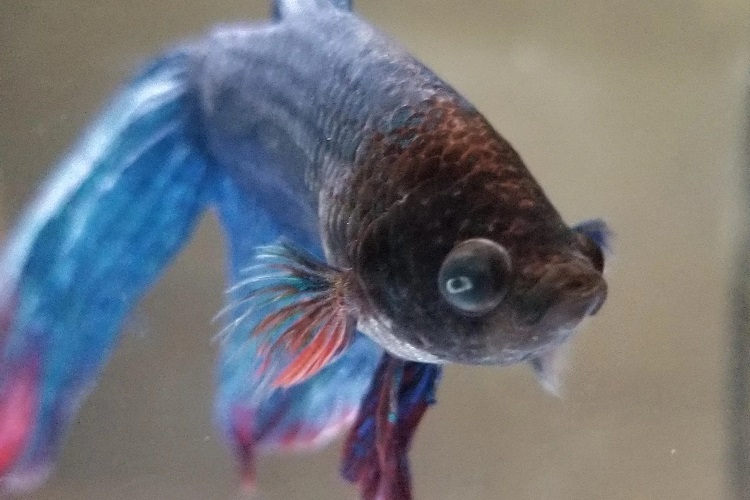
Popeye is when a fish has one eye or both that are bulging. Blindness or partial blindness can occur if this condition is not treated correctly.
Causes
Popeye can be caused by infection, injury, or poor aquarium conditions. Injury can happen when betta fish are fighting among themselves.
Symptoms
You can quickly diagnose popeye from the swollen appearance or redness of the fish’s eye or eyes. Fish may become lethargic.
Treatment
If an injury caused popeye, it would usually heal on its own. Maintaining clean aquarium water while the betta fish is healing is crucial. If a bacterial infection caused popeye, you would need to isolate your affected fish and treat it with antibiotics.
Prevention
Maintaining proper water chemistry in your aquarium and regular partial water changes is best.
Velvet
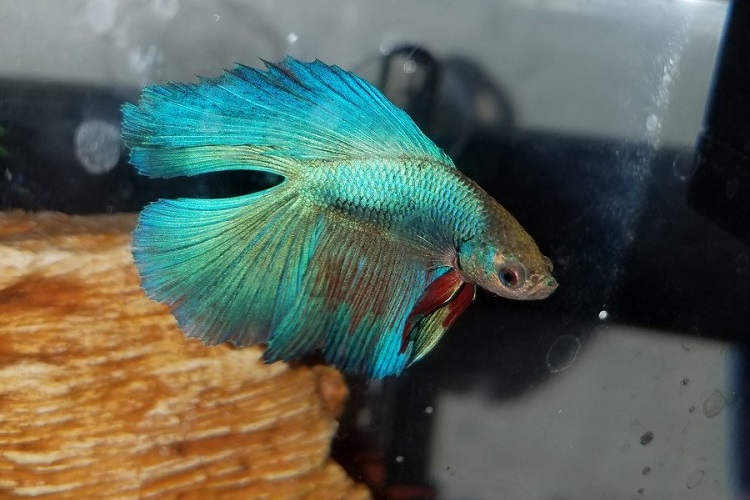
Parasitic infection causes betta velvet in betta fish. These parasites infect the betta fish and start to eat their flesh.
Causes
The Oödinium parasite lives on decorations or plants that are in your aquarium. It is an alga that presents a significant risk to your betta fish, and they will attach to your betta fish to feed.
Symptoms
Betta fish with velvet will lose their color or develop a yellowish coating.
Treatment
You can change the water, increase the temperature, and minimize the light in your aquarium. This can be combined with aquarium salt and copper sulfate.
Prevention
You can prevent velvet from getting into your aquarium by quarantining new fish and plants before adding them. Change and test the water routinely. It is best to ensure that your aquarium is not overcrowded and you feed your fish a nutritious diet.
Conclusion
Although many diseases can affect your betta fish, it is evident that most ailments can be prevented with proper aquarium maintenance. Providing your betta fish with a clean and healthy environment will guarantee them a long and happy life.

Ian Sterling, founder of Fishlab.com, began his aquarium journey over 30 years ago, driven by a deep fascination for fish and their diverse personalities. His website, Fishlab.com, is dedicated to making fishkeeping accessible and enjoyable, offering beginner-friendly guidance, expert insights, and a community for aquarists to connect and share experiences.


